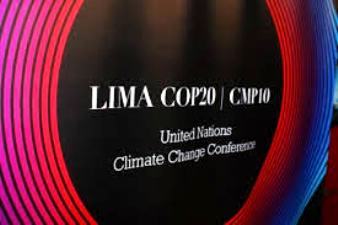
Gland, Switzerland – While political will appears to be lacking in terms of tackling climate change, the will of creative and energetic entrepreneurs working in the field of climate innovation is on the increase.
Companies with winning technologies have recently been announced by WWF under its Climate Solvers programme, underscoring both the benefit and opportunity for business to contribute to fighting climate change.
Innovation is typically a new way of doing something while increasing the value for a customer. WWF believes that this customer value must include radically reduced carbon emissions, energy access and compatibility with a transition to a renewable energy future as described in WWF’s Energy Report.
Climate innovations are often primarily associated with mitigation activities but infrastructure that enables more renewables and energy access solutions are also considered climate innovation, as are innovative financial services that can scale these to market faster.
WWF’s Climate Solvers programme recognizes top climate innovations in key countries. While it has been implemented in Sweden for the past five years, innovation work has now expanded to the UK, Netherlands and China. India will announce their first selection of Climate Solver entrepreneurs in early 2013.
The global market for clean technology manufacturing doubled between 2008 and 2011 to almost reach 200 billion Euros per year. By 2015, the clean tech sector is expected to rival the oil and gas equipment market, when the forecasted market size will be between €240 and 290 billion, says Samantha Smith, WWF’s Global Climate and Energy Initiative leader.
“What science tells us and what millions of people experienced this year is that fighting climate change is now extremely urgent. This year alone, we have witnessed some of the most devastating effects of climate change all around the world.”
“As CO2 emissions reached record highs, Artic sea ice reached record lows, droughts blistered the world’s grain-producing areas, and wheat, corn and soybean prices hit historic peaks. And when food prices spike, poor people go hungry. While we work to urge our political leaders to start taking decisions that will positively impact climate change, we also work to encourage and support innovators who are making a difference right now,” she says.
Climate innovation is also about business opportunities and poverty alleviation. It’s about avoiding wasteful consumption and job generation that make emissions in our society shrink, says WWF’s Innovations Programme Manager Stefan Henningsson.
“The transition from a high-fossil-fuel economy to a clean, renewable energy economy requires new solutions, products, systems and services which will radically reduce climate impact. Such climate innovations are numerous, proven and available. The question is how to employ them at speed and scale, globally,” he says.
Innovations that have a good business case can instil confidence for policy makers to dare to increase ambition on reducing cuts so that these innovations can grow and create even more decent jobs, says Henningsson. Investors, business and policy makers all need to play proactive roles for major commercialization of climate positive solutions carried by entrepreneurs.
Some of the innovations recognized this year include:
- rental of solar charged vehicles with no upfront costs;
- retrofit mortgage for energy efficiency in existing building stock;
- innovative solar cell manufacturing technology;
- one stop shop for business/home info on renewable energy investments;
- smart storage battery charging;
- waste gas reuse for improved steel manufacturing;
- financial services and technologies for better access to cooking, lighting and charging in poor countries with the help of easily available renewable energy.
WWF Innovation Award Winners for 2012 by Country
CHINA
Universal Energy Electrical Co. Ltd: Smart Self-Adaptive Storage Battery Charger
Electric cars are more and more a match for their fossil fuel counterparts in terms of comfort and performance. One of the main reasons they aren’t more prevalent is that compared with petrol stations, battery chargers aren’t common and the entire battery charging process can be slow. Universal Energy’s Smart Self-Adaptive Storage Battery Charger improves charging energy efficiency from a conventional 60%-85% up to 97%, which helps makes charging at least twice as fast as with traditional chargers. Further, the charger is only about 1/20th the weight of typical charging solutions with the same power output. Universal Energy’s chargers are currently used by the Chinese military, but with their high-performance characteristics, the company is hopeful they’ll receive strong interest from the private sector.
Wuhan Yunhe Dingyu Refrigeration Science & Technology Co. Ltd: Thermal-Chemical Absorption Refrigeration System
In China, refrigeration, from air conditioning to freezing, is a major consumer of electricity and hence emitter of carbon emissions. Beyond that, the commonly used refrigerants are much worse greenhouse gases than carbon dioxide. Yunhe’s Thermal-Chemical Absorption Refrigeration System replaces electricity as the power source with heat from diesel engine exhaust, industrial steam, or even solar energy. Further, it replaces substances with high global warming potential as the refrigerant with ammonia, and gets rid of electric compressors altogether. Yunhe technology is already found in the air conditioners, ice makers, and freezers of some fishing boats.
China City Environment Protection Engineering Co. Ltd: LHVG Safe and Clean Power Generation System
China has grown into the world’s largest steel producer. And all that steel making produces vast amounts of chemical gases containing vast amounts of heat, which represents not only great wastage of chemical and thermal energy, but also air pollution. CCEP’s Low Heat Value Gas Safe and Clean Power Generation System can take these otherwise waste gases, combust them to create greater heat, and then drive a gas or steam turbine to produce power for the steelmakers.
[Photo: From coal to clean. Wind and solar power generation provides a clean alternative for future generations. Sydney, Australia. © Adam Oswell / WWF-Canon]


















